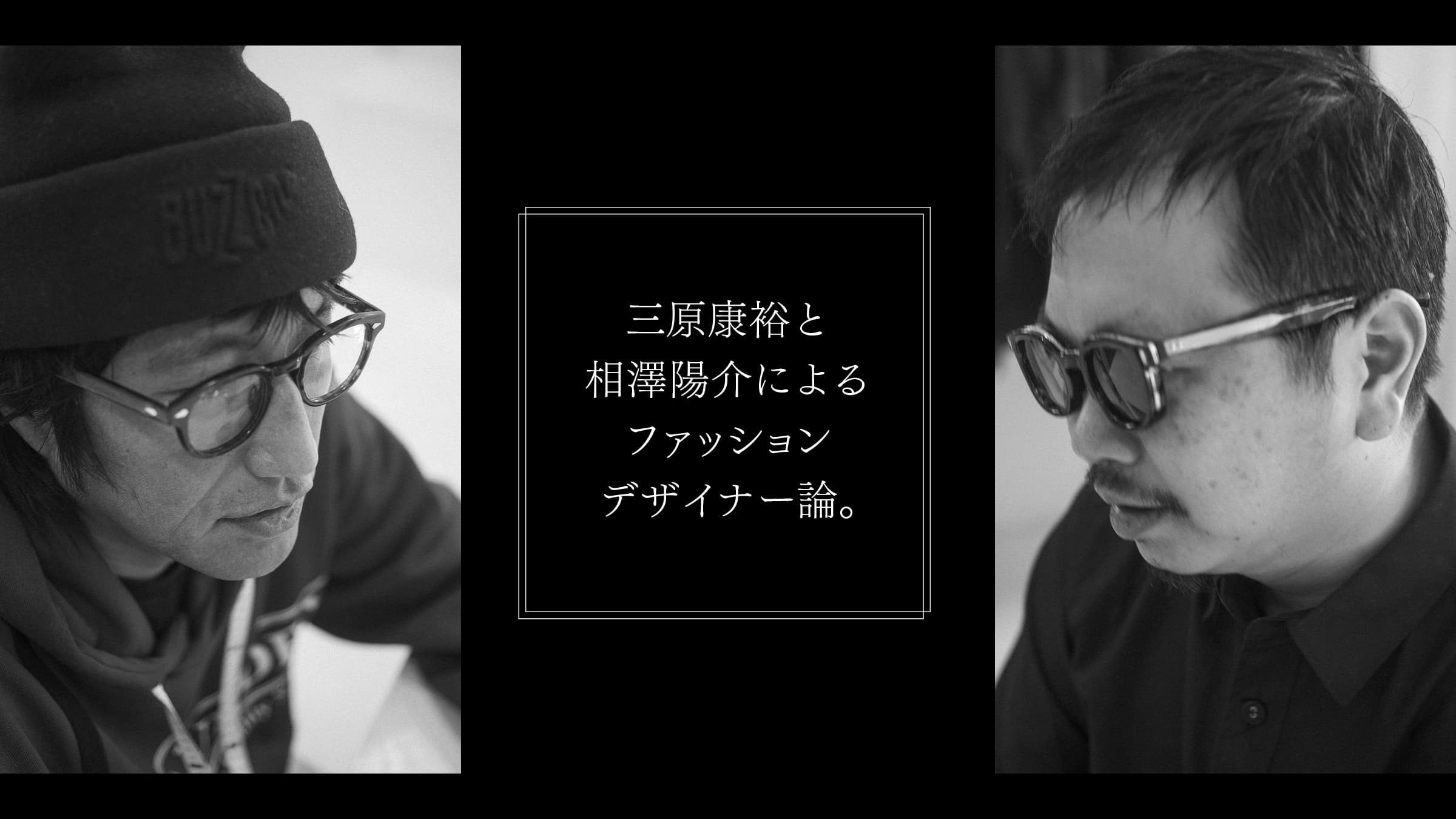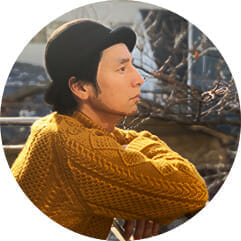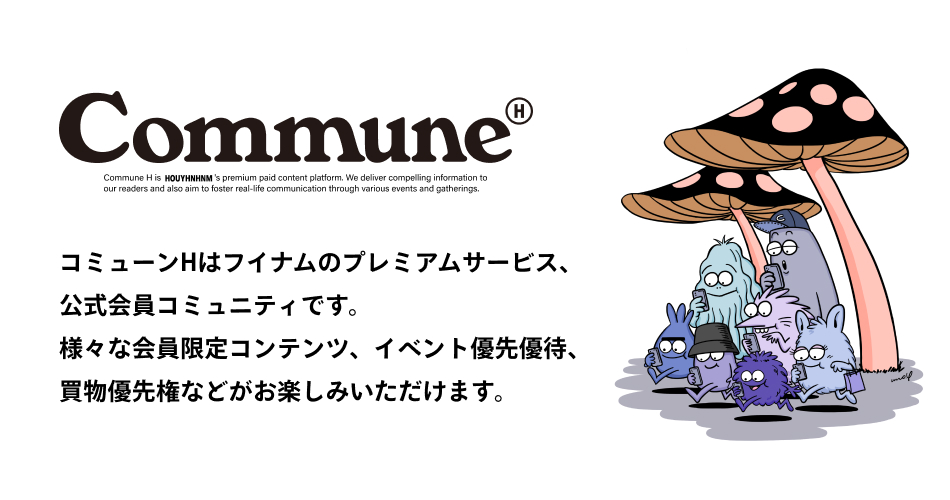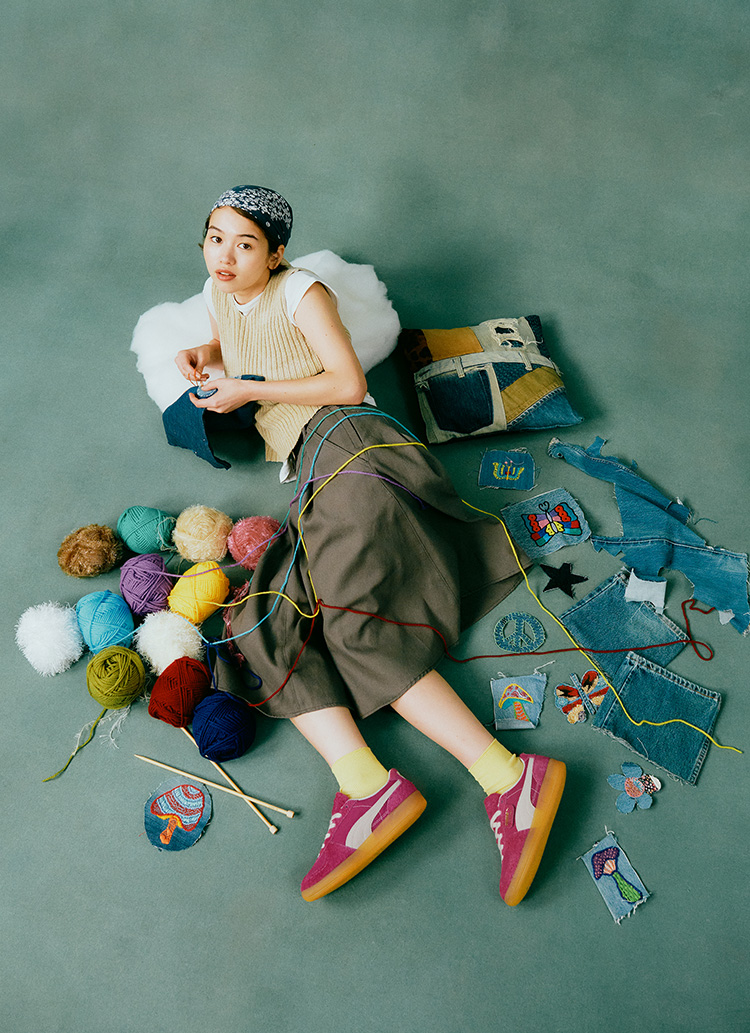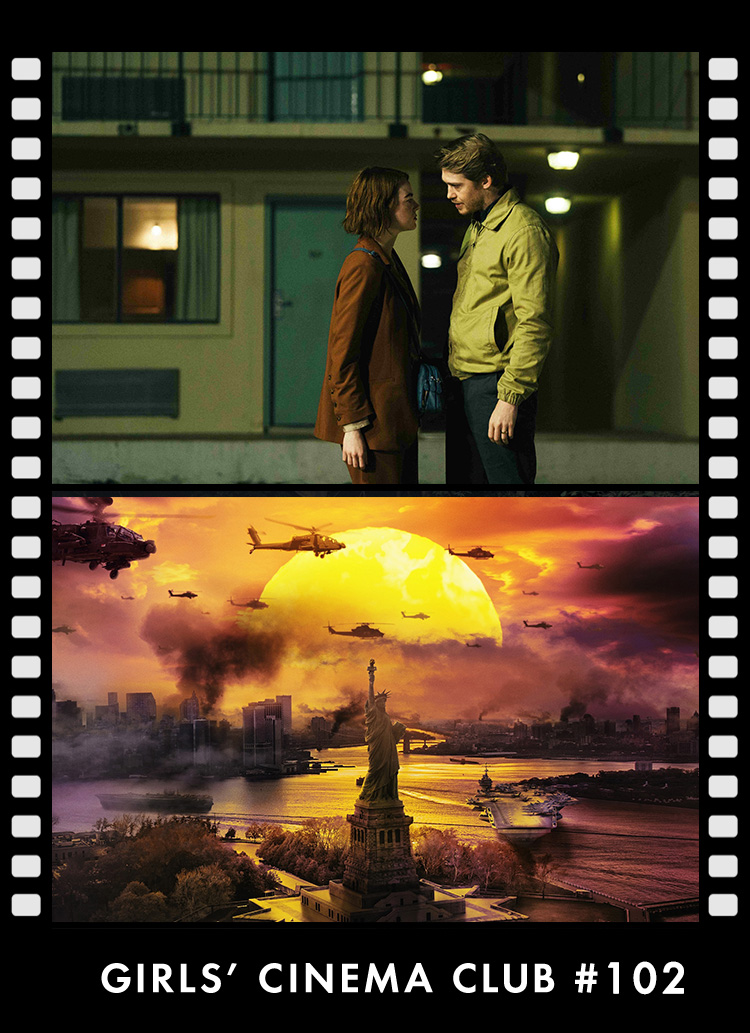Is this the first time you have had a conversation in the media?
Aizawa:Yes, this is my first time when it comes to a dialogue.
I saw that Mr. Mihara made a comment in a magazine ("QUOTATION") featuring "White Mountaineering" that went on sale at the end of March of this year.
Mihara:Yes, yes, I wrote quite seriously.
Aizawa:Yes, he wrote very seriously.
Mihara:We talked about how I felt about Aizawa-kun, which season I liked and which season was the best, and so on. I think it all started when Koichiro (Yamamoto, stylist) introduced me to an interesting girl when he was running a store called "Sounds Good. He said, "She is Mihara-kun's junior.
Aizawa-san, that was the first time I heard of you.
Aizawa:At the time, Koichiro was doing the styling for the "YASUHIRO MIHARA" show, right?
Mihara:Yes . I asked Koichiro to do my first show in Paris. Then, I saw "White Mountaineering" for the first time at that store ("Sounds Good"). Of course, it was before the show, so I only saw a few product pieces.
You both graduated from the same Tama Art University, but you didn't know each other from back then.
Aizawa:I should have entered the school the year Mr. Mihara graduated, , I believe.
Mihara:Not after that school is cleaned up, right?
Aizawa:Yes, it was. It was very dirty. Now it's an ultra-modern university.
Mihara:Yes, it is.
What was it like in the past?
Aizawa:Cats and stuff were usually in there. There were cats in the classrooms.
Mihara:I was there. There was a time when the school was a prefabricated building. Only the main building was clean. The name of the school has been changed, but I think it was called "Faculty of Art, Department of Design, Textile Design" back then.
Aizawa:Yes, it is.

You two were in the same department.
Mihara:Yes, I am. The Dyeing and Textile Design major is, to put it simply, a place to learn about fabrics and such.
I see. I knew that Mr. Aizawa was from that department, but I see that you are from the same department, Mr. Mihara.
Aizawa:No, no, no, the biggest star of my school graduation is Mr. Mihara.
Mihara:But, you know, they call it a "dyeing and weaving design major," but no one comes to school to study dyeing and weaving design.
Aizawa:(Laughter).
Mihara:The same was true for me and for Mr. Aizawa, but this was before the ratio was as low as it is now, so the ratio was still quite high.
Aizawa:There were about 20 times as many.
Mihara:So, it's normal to have two or three noren, or something like that . By the way, I am a Ni-no-nani.
Aizawa:I'm a one-nai.
Mihara:Oh, that's excellent . . And every university has its own flowery department. In the case of art school, there are many graphic design departments.
Aizawa:However, things have changed quite a bit recently, and the information design and general design departments are becoming more flowery. Graphic design is 2D. Nowadays, it is more like 3D and directional design.
Mihara:I see. In Musashi Aesthetic, the space,,
Aizawa:You mean "Kuude (Department of Spatial Design)," right? (Wonderwall) where Katayama-san teaches, right?
Mihara:Musashi Art has a department for the first exam, and if you don't pass it, you can't take the practical exam. . The same is true for graphic design at Tama Art. However, Tama Art's textile dyeing and weaving department did not have a department, and students could take the practical test. That may be why the students who came to Tama Art were all good at drawing at that time. But there were a lot of idiots (laughs).
(laughs).
Mihara:But really, everyone at Musashi Art was very smart.
Aizawa:. It was a place for those who failed to get into the University of the Arts, wasn't it?
Mihara:. So Tama Art's textile dyeing and weaving department was unbalanced overall.
Aizawa:. The ages were also varied. There were 30-40% each of current students and those who had been in school for a year, and then there were those who were 5 years older than us.
Mihara:There were kids who were 6 years behind in school .
Aizawa:There were people who were accepted to the University of the Arts and went there.
Mihara:When it came to graduate school, everyone wanted to go to graduate school at the University of the Arts.
Aizawa:By the way, Mr. Mihara, how old are you now?
Mihara:47 years old.
Aizawa:That means he is 5 years older than me. Mr. Mihara was a second-year student, so he graduated when I, a first-year student, entered the school.
Mihara:. Anyway, dyeing and weaving at Tama Art University is all about practical skills, isn't it? Well, but I wonder if the current students will not like it if I say this.
Aizawa:No, it's okay. . I'm teaching now (visiting professor at Tama Art University).
Do you feel any sympathy for the fact that you are in the same university and the same department?
Aizawa:I had been watching Mr. Mihara for a long time. I knew that he had been making shoes since he was a student, and I had the feeling that I had entered a department where "Yasuhiro Mihara" was working. Since then, I have been watching him make women's wear and put on shows.
Mihara:Thank you , really.
Aizawa:So, I really look at them as my "senpai" (seniors), not with colored glasses. I look at them as if they are my seniors doing creative things, regardless of what anyone else thinks of them. That has never changed.
Mihara:I'm glad to hear that. Koichiro introduced you to me at first, but we first met and talked in Milan or somewhere, right? Was it when we were both working for Moncler?
Aizawa:Yes, that's right. I was also doing "Moncler W" at that time, and for one season I was doing "Moncler Y," which Mr. Mihara is doing, and so on.
Mihara:I had dinner with some of them for the first time and we talked properly , and I remember feeling very close to them. Until then, I had never had a chance to talk with him. I had a former teacher at Tama Art University, and I had heard about Aizawa through him from time to time.



